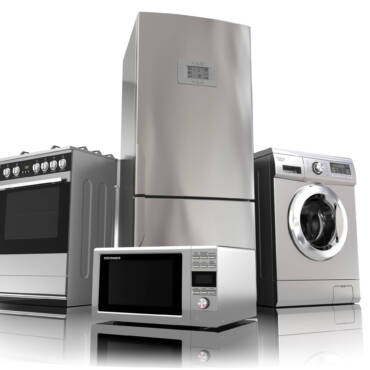Natural Gas CorePower Generators Versus Liquid Propane
In the event of a power outage, Generac’s CorePower generators provide reliable and affordable backup electricity — whether it’s fueled by natural gas or liquid propane. These units come in a variety of sizes to fit any home, and they’re all backed by Generac’s industry-leading warranty.
While both natural gas and propane models are available, natural gas units are typically cheaper to operate than those powered by liquid propane. As you might expect, natural gas is almost always cheaper per-unit of energy than liquid propane.
There are a lot of Generac generator dealers out there, which means finding the right one is key when trying to choose between a natural gas versus liquid propane model. Exploring the right Generac dealer gets a lot of potential issues out of the way — upfront and early — such as improper installation, safety hazards, generator damage, invalidated warranties, inefficient operations, and legal issues.
Almost all Generac generator dealers will provide exceptional service. It’s not a matter of best versus worst; it’s a matter of finding the best of the best.
CorePower Generators and the ‘Why’ Behind Fuel Costs
When considering CorePower generators, you’ll want to zero-in on the “why” behind your choice of gas and the cost. Natural gas prices in the United States ranged from approximately $2.30 to $5.40 per thousand cubic feet as of late 2023, according to the U.S. Energy Information Administration (EIA). It’s a useful, economic fuel that can be 25 – 50 percent cheaper than liquid propane at any given time, depending on the season.
But that’s only the beginning. Natural gas generators don’t require fuel tanks to be refilled, and compared to liquid propane generators, they are usually a bit quieter and cleaner. However, storms can damage natural gas lines, which can disrupt your power supply. Believe it or not, in some cases natural gas may not be accessible to all homes.
These pros versus cons make a liquid propane generator a viable alternative if you don’t have access to natural gas utility service. The cost-versus-benefits comparison and convenience comes down to these factors:
- Pros of natural gas: It’s less expensive per unit of energy, connected to a pipeline, quieter, and oftentimes cleaner.
- Pros of liquid propane: It’s available in all areas and can be stored onsite.
- Cons of natural gas: It can be disrupted by storms, and it’s not available in all areas.
- Cons of liquid propane: It’s more expensive per unit of energy, requires refilling, louder, and less clean.
Even more interesting: Natural gas’s efficiency and lower price compared to other forms of energy results in lower utility bills for heating a home, with natural-gas homes having 46 percent lower utility energy bills than liquid propane-powered homes. For more comparisons, an all-electric home’s energy bills are 49 percent lower, and an oil-powered home’s energy bills are 53 percent lower (both similar to natural-gas home savings).
Liquid Propane: Conversion and Combustion
Let’s look at liquid propane CorePower generators first. How do they use and process fuel?
It all happens through the conversion of liquid propane into a vapor. While a combustion chamber ignites the vapor by mixing it with air, heat is produced during the combustion process, which is then used to turn a turbine that generates electricity.
The liquid propane extraction and manufacturing process are also interesting.
The process recovers liquid components and converts them into propane. It also includes hydrocarbons such as butane, ethane, and methane. Crude oil refining also produces propane and butane.
After you purchase propane and transport it to your outside storage tank, the hard work’s over. When needed, a pump draws the propane into the generator. After, your generator passes the gas through a heat exchanger and eventually vaporizes the liquid. It then mixes the vaporized liquid in a carburetor, and a combustion chamber ignites the air-fuel mixture. This reaction produces heat, and the heat expands and pushes against a piston to turn a turbine. Your generator sends this electricity to your generator control panel. And finally, the control panel distributes the new electricity to your outlets.
Generac generators use different amounts of fuel depending on their size and load. At half load, a 22-kilowatt (Kw) generator can burn about 2 gallons of propane per hour. At full load, it can consume up to 3.5 gallons per hour.
Remember that fuel consumption will vary depending on your generator’s size, and fuel use will also increase as more appliances and devices are connected to your generator’s electrical output. Cold temperatures can also cause generators to use more fuel since their engines have to work harder.
What Natural Gas CorePower Generators Offer
For natural gas-fueled CorePower generators, your unit is directly connected to a utility pipeline or storage tank. In the generator’s combustion chamber, gas is mixed with air and ignited, thereby generating electricity through turning a heat-powered turbine.
Recently, companies can produce natural gas from low-permeability formations, such as shale. They do this at an increasing rate with fracking technology, which increases extraction from tight geological formations. As soon as the gas is extracted from crude oil or other solids, it’s separated and gas is freed. You can get an idea of where — and how much — natural gas is extracted and produced on a regular basis across the United States by monitoring the EIA’s facts and statistics on prices, reserves, exploration, production, storage, and consumption.
After a professional connects a natural gas line from your generator to your home’s utility line, a regulator controls the flow. A carburetor (or air-fuel mixing valve) removes impurities before mixing the gas and air. Even more occurs in the combustion chamber. The combustion chamber allows the air-fuel mixture to ignite. This ignition, and the heat produced, expands the air and pushes against a piston to turn a turbine. This entire process eventually distributes electricity through your control panel and to your outlets.
At half load, a 22-kilowatt (Kw) generator burns about 50 cubic feet of natural gas per hour. At full load, it can burn up to 85 cubic feet per hour. Once again, fuel consumption varies depending on the size of generator, number of appliances and devices connected to your power outlets, colder versus warmer weather, and any natural gas impurities that the engine has to work harder to burn off.
The ‘CorePower’ Difference and Your Peace of Mind
Whether you’re using liquid propane or natural gas, CorePower generators should only be powering essential appliances and devices if you want to conserve fuel. When it’s not in use, turn off lights and other non-essential appliances. Overall, keep it in good working condition by regularly maintaining it or calling a technician to inspect it yearly.
Generac CorePower generators come with TruePower technology, low sound decibel levels, and easy-to-access service points. Their compact design makes installation and maintenance simple, and with Mobile Link remote monitoring, you can control your generator from anywhere.
CorePower generators provide backup power and peace of mind in the event of an outage, protecting your most valuable devices, appliances, and electronics from power surges and dips — including heat, air conditioning, and food refrigeration. Essential appliances such as sump pumps and medical devices can also still be used.
Both propane and natural gas models are available for Generac CorePower generators, from 7 kilowatts (Kw) to 22 kilowatts (Kw). Homeowners looking for reliable and affordable backup power should consider these models, as their easy installation and maintenance make for a great long-term investment in your home and your comfort.
Danley 911 Home Services Electrical
At Danley 911 Home Services Electrical, we assist you throughout the entire process — from helping you prepare for installation, repair, and maintenance to anything else surrounding CorePower generators, as well as obtaining permits, inspections, and much more. We help you optimize and fine-tune your situation so you get the most out of your investment, as well as determine the correct generator size.


